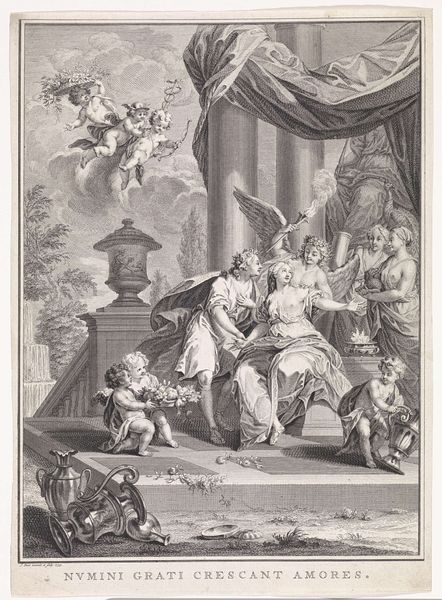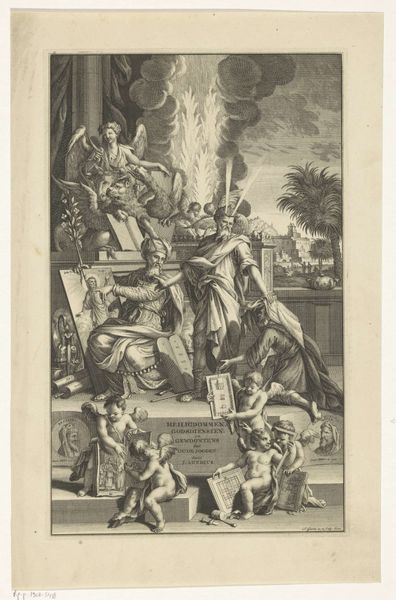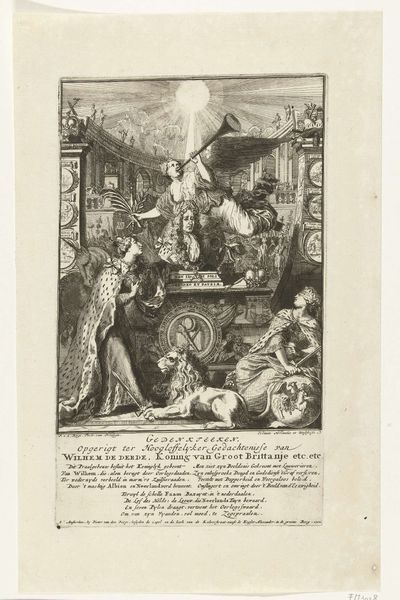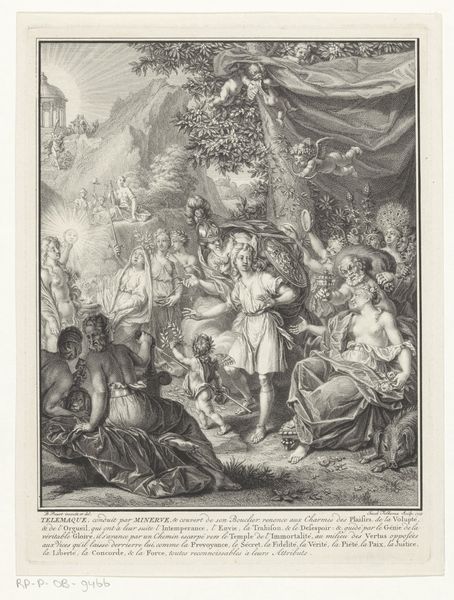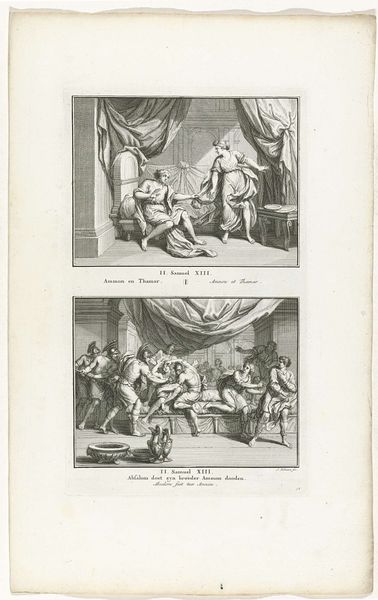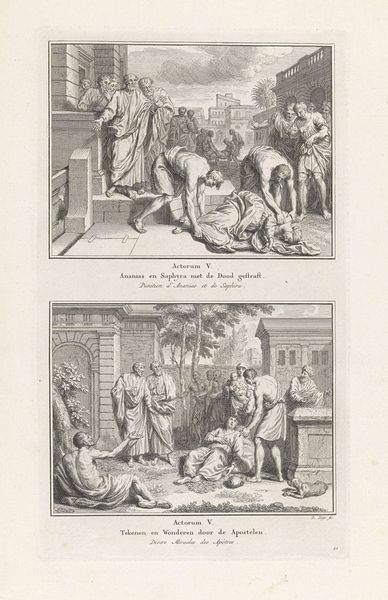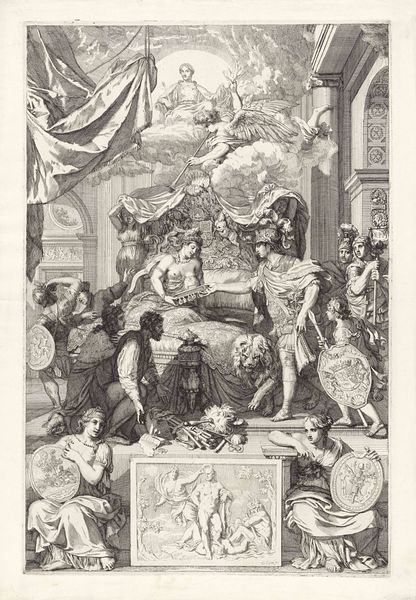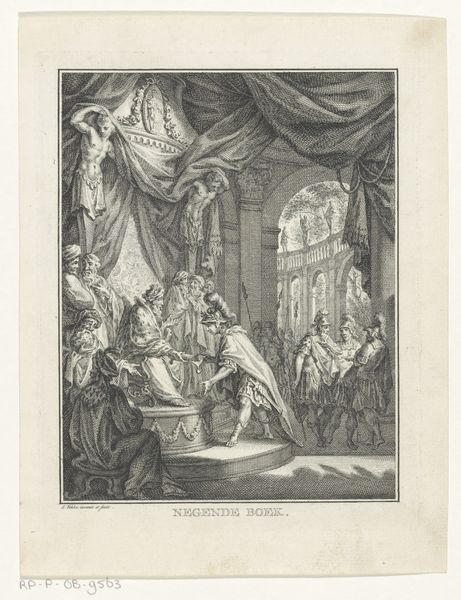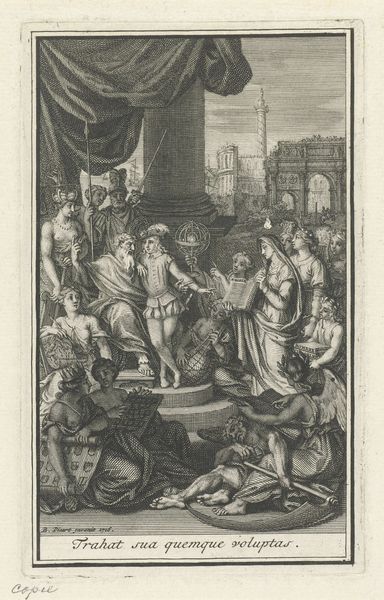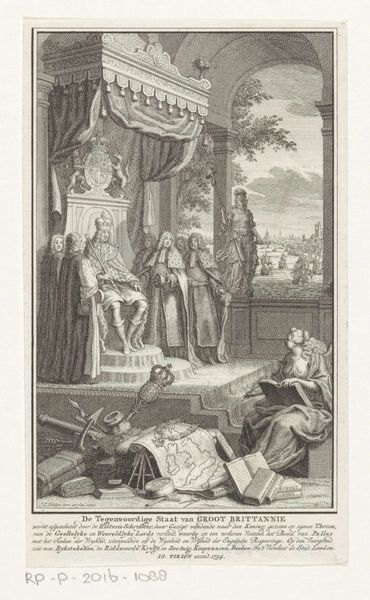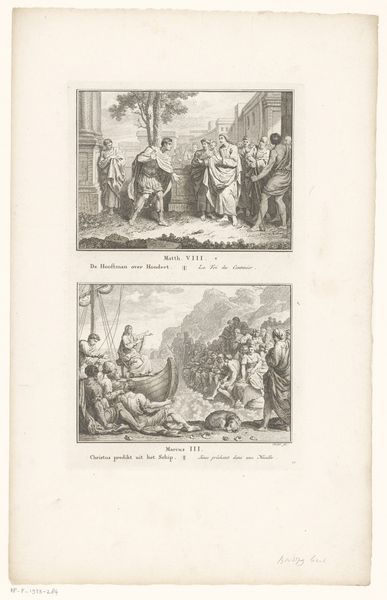
print, engraving
#
portrait
#
allegory
#
baroque
# print
#
old engraving style
#
history-painting
#
academic-art
#
engraving
Dimensions: height 316 mm, width 202 mm
Copyright: Rijks Museum: Open Domain
Editor: This engraving from 1734, "Koning Filips V van Spanje gelauwerd en geëerd" by François Morellon La Cave, has a distinctly celebratory mood. I’m struck by how layered and busy the composition is. What kinds of visual stories do you think the artist is trying to tell? Curator: The layers speak volumes, don’t they? Note how La Cave uses classical allegory to solidify Philip's image. Observe the laurel wreath: in Roman iconography, it signifies triumph. Ask yourself: What victories are being alluded to? Also, how does the inclusion of putti alter our understanding of power? Editor: Well, the putti are adorable, but also seem to carry this banner with some Latin phrase... gallia me nato... ? It definitely reads as being triumphant, and the laurels are an obvious signifier. Curator: The banner connects Philip's image to the land of Gaul - Roman France - perhaps speaking to his reign as both King of Spain and claimant to the French throne through his grandfather, Louis XIV. Consider the religious iconography, too: the chalice held aloft. Does it point towards spiritual or secular power? Does this image speak of a merging of those realms? Editor: That's interesting! The chalice definitely adds another layer, and makes it about more than just earthly rule, even. Curator: Indeed. And observe how the architecture is less a real place and more an evocation of an idealized classical past, grounding Philip in a longer history of imperial power. The symbols create a sort of echo chamber, reinforcing legitimacy. How do you think it functions to control and solidify a specific memory? Editor: I now realize it presents Philip V as heir to a legacy reaching far back in time, mixing military might, spiritual authority and this classical grandeur to essentially say he was destined to rule. It makes it much harder to question his legitimacy, because it's presented as being sanctioned by time, history, and heaven! Curator: Exactly! Spotlighting the memory that confers advantage in the present and future, as this piece demonstrates. These carefully constructed symbols invite a kind of… cultural self-affirmation.
Comments
No comments
Be the first to comment and join the conversation on the ultimate creative platform.
